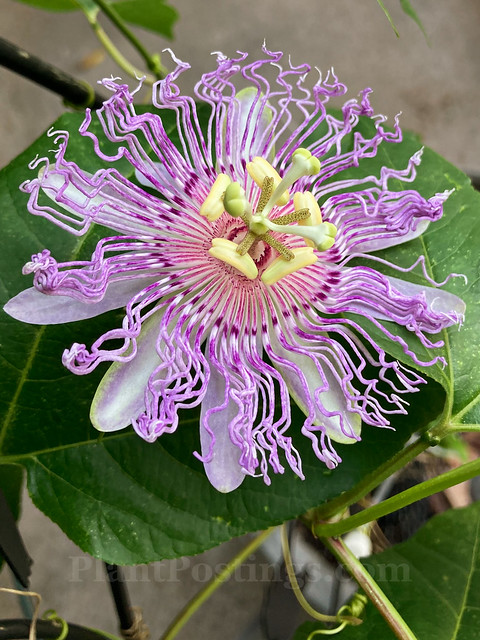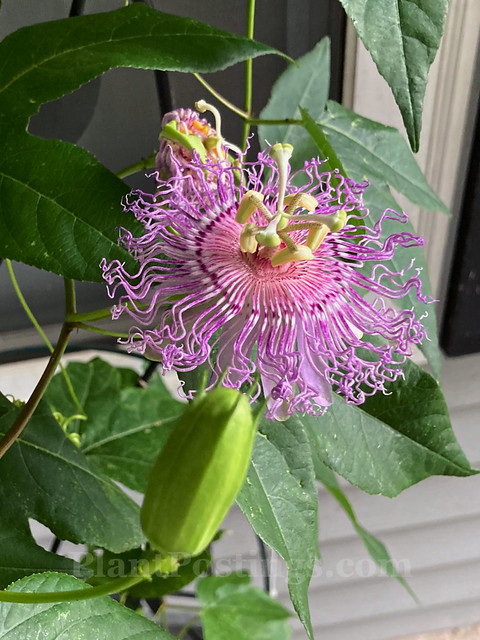
It's fun to grow new plants, and it's especially fun to compare different methods, settings, and conditions for the same plant. Last year, I started several Purple Passion Flower plants (Passiflora incarnata) from seed. This plant is native just to the south of us in Central Illinois and throughout the Southeast U.S.
The seeds grew well last year, and they came back this past spring. But I didn't see any flowers...
Until a couple of weeks ago! I was adjusting something above the potted plant when I saw the first flower. What a sweet surprise!

Next, I realized there were several additional buds, and it's been a joy to see them all bloom in succession.

Here are the pot and the trellis the flowering plants are growing on. They spent the winter indoors in the sunroom, going nearly dormant and then popping back in the spring. They really took off when I put them out on the front porch facing the afternoon sun.

I also planted some vines in the soil on the west side of the house. They came back even stronger, but they haven't flowered. Maybe next summer? I covered these plants in the soil with heavy mulch for winter, since we're USDA zone 5--borderline for winter survival of this plant. This is probably the warmest spot in my garden, getting sun and heat from the house throughout the entire year.

Next, I realized there were several additional buds, and it's been a joy to see them all bloom in succession.

Here are the pot and the trellis the flowering plants are growing on. They spent the winter indoors in the sunroom, going nearly dormant and then popping back in the spring. They really took off when I put them out on the front porch facing the afternoon sun.

I also planted some vines in the soil on the west side of the house. They came back even stronger, but they haven't flowered. Maybe next summer? I covered these plants in the soil with heavy mulch for winter, since we're USDA zone 5--borderline for winter survival of this plant. This is probably the warmest spot in my garden, getting sun and heat from the house throughout the entire year.
It's been a fun experiment to compare the potted plants with the outdoor garden plants. I hope they'll all survive and thrive next year, too. Will they fruit?

I've noticed a few pollinators on them, and apparently P. incarnata plants are self-fertile, meaning they don't need a partner plant to be pollinated and bear fruit.

It's so entertaining to watch the pollinators move among the dramatic stigmas and anthers and other flower parts.

Passion Flowers are so beautiful and so unique.


I've noticed a few pollinators on them, and apparently P. incarnata plants are self-fertile, meaning they don't need a partner plant to be pollinated and bear fruit.

It's so entertaining to watch the pollinators move among the dramatic stigmas and anthers and other flower parts.

Passion Flowers are so beautiful and so unique.

Every part of this plant is beautiful--from the foliage to the flowers to the sweet tendrils that wrap around the supports and curl around each other. New adventures with plants are so gratifying!




